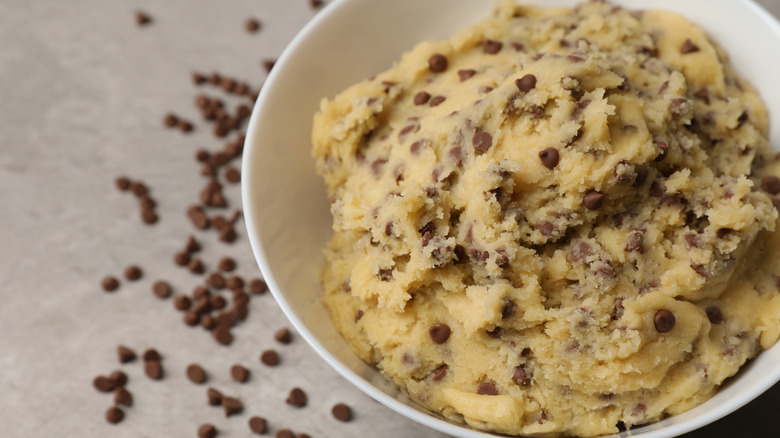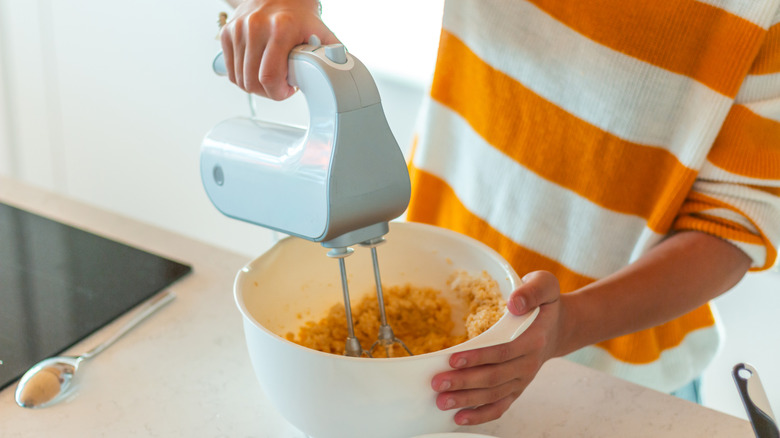How Do You Know If Cookie Dough Is Overmixed And How Do You Avoid It?
Making cookie dough from scratch; you might think, "How hard can it be?" But even the most simple-seeming culinary staples carry with them some basic pitfalls, and cookie dough is no exception. One of the quickest ways to run into textural issues is by overbeating the batter. Food Republic spoke with Deana Karim, owner and founder at Good Dee's, to help identify when this error has happened and how to avoid it.
According to Karim, the reason that overmixing creates an issue goes back to baking basics. "Over-mixing develops gluten, especially after flour is added. This is great for bread — not for cookies." When it comes to identifying dough that has tipped the scales into being overmixed before you've even put it in the oven, Karim said there are two textural red flags to look out for. When your dough is overly sticky, pasty, and stretched out, or if it lacks that soft, fluffy texture you expect to find in the mixing bowl, odds are things have gone awry.
If you miss those warnings during the kneading process, you'll likely see the results once the cookies come out of the oven. The signs of a baked cookie that was overmixed, according to Karim, are, "Cookies [that] come out tough, flat, or cakey (depending on the fat-to-flour ratio), they might spread unevenly or not at all, [and they] often have a chewy/rubbery bite when cooled."
When it comes to proper mixing, timing is everything
Don't worry, we're not just here to tell you how things can go wrong. Luckily, Deana Karim also shared excellent mixing techniques to avoid the dreaded pitfalls and perfect your homemade cookie dough.
Her first tip: "Cream butter and sugar only until light and fluffy — stop once it looks whipped." She also warned not to overmix your eggs, instead stopping after they're just combined, and only mix on low or by hand once the dry ingredients are incorporated. It's also important not to overcorrect just because things don't look completely uniform, as the wet and dry ingredients will incorporate together while your dough rests. Finally, pay attention to how you add the fun fillers. "For chunky add-ins like chocolate chips or nuts, fold them in by hand at the end to avoid smashing or overmixing," the expert shared. "If using a stand mixer, use the 'stir' setting or pulse briefly."
If your cookie dough still falls flat after you've checked off the boxes laid out above, that doesn't necessarily mean it's time to panic, but it may be time to perform some cookie triage. "Chill the dough for 15–30 minutes after mixing to help the flour hydrate and relax any accidental gluten buildup — this helps the cookies bake evenly with better texture," Karim recommended. Properly chilling cookie dough matters, but if you're short on time, you can pop it in the freezer to expedite the process. And if you're really in a pinch, you can also try chilling your cookie dough by dunking it in ice water.


